Historic Overtown: Black history in Miami
Most visitors to Miami see just a few neighborhoods: Miami Beach with its gorgeous Art Deco buildings along its long white-sand beach, Little Havana for a taste of Cuban culture, and perhaps Wynwood and the Design District for lots of street art and some cool architecture. There’s another neighborhood, though, that gets overlooked and is certainly undervalued, especially looking at its rich history: Overtown, the historically Black section of Miami, a.k.a. “Harlem of the South.”
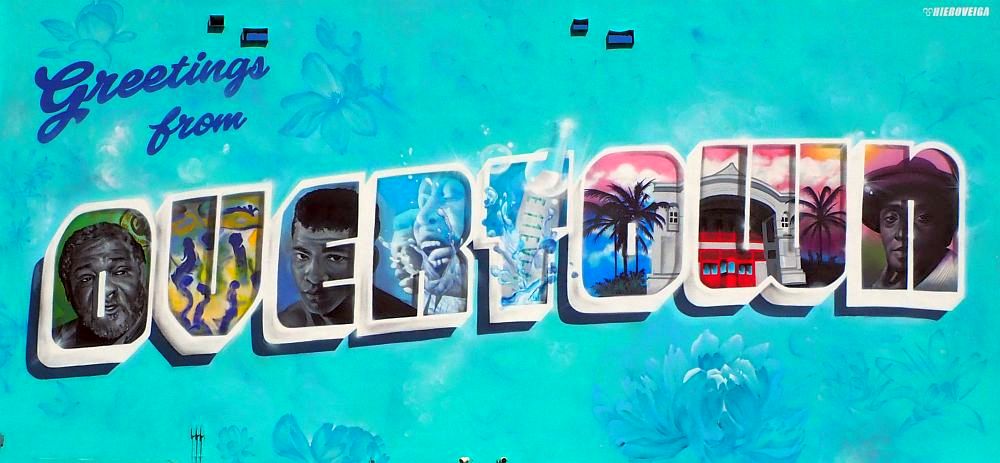
Disclosure: This article contains affiliate links. If you click on one and make a purchase, I will receive a small commission. This will not affect your price.
If you want to just skip to the things to see, use the table of contents below:
A brief history of Historic Overtown
Overtown is where the Black community lived even before Miami’s incorporation as a city in 1896. Black laborers – railway and construction workers – had already settled the area. They had come from all over the south, and also included a large number of Bahamian immigrants. Jim Crow laws required that Blacks live separately from whites, and this area was the only place Blacks were allowed to live. It became known as “Colored Town.” Almost half of the men who voted to incorporate the city of Miami were “colored.”
Housing in Colored Town was quite poor, and as the population grew, it got worse. Sanitation was lacking and fire was a threat – the people lived in wooden “shotgun houses” with front porches.
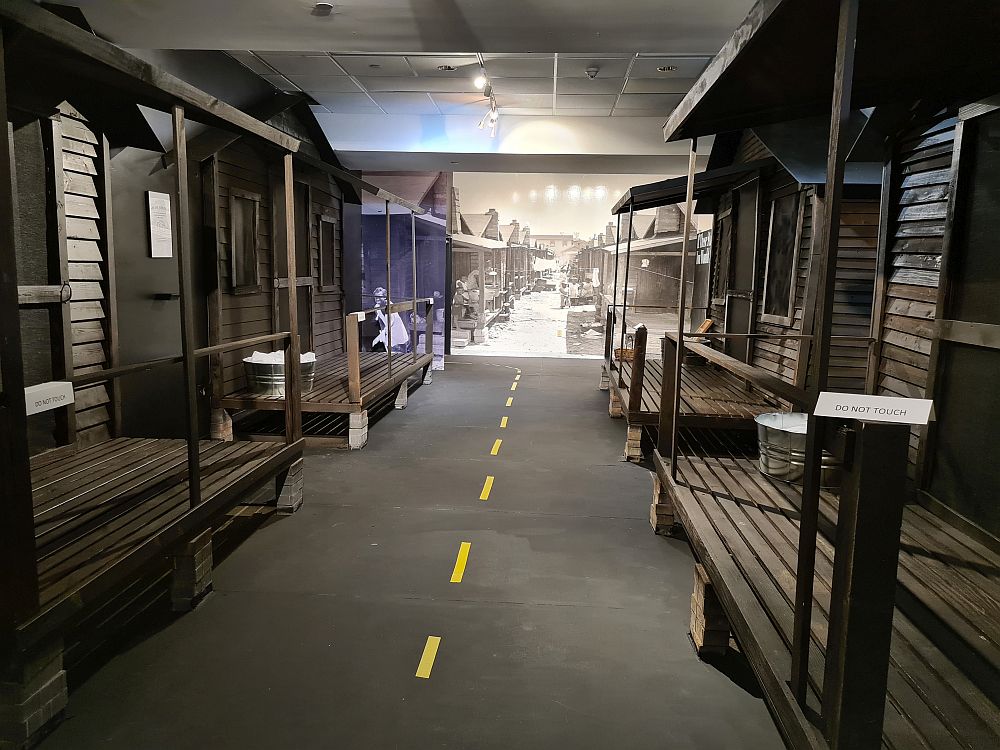
Historic Overtown’s heyday
Overtown became the heart of Miami’s Black community in the Jim Crow era and local businesses thrived. There were general stores, a grocery, an ice cream parlor and a drugstore, as well as a pharmacy, a lawyer’s office, a Black newspaper, a funeral parlor, and many more businesses.
In this period, and into the 1960s, Blacks had to carry a pass to enter other parts of town. Even the top Black performers – Cab Calloway, Ella Fitzgerald, Billie Holiday, Etta James, Nat King Cole, B.B. King and many others – who performed in clubs in Miami Beach in the 1940s, 50s and 60s were not allowed to stay there. Instead, they crossed to Overtown to stay in one of the numerous hotels that catered to Black guests. They would perform late at night at local clubs for a mixed audience after finishing their shows for their white audiences in Miami Beach.
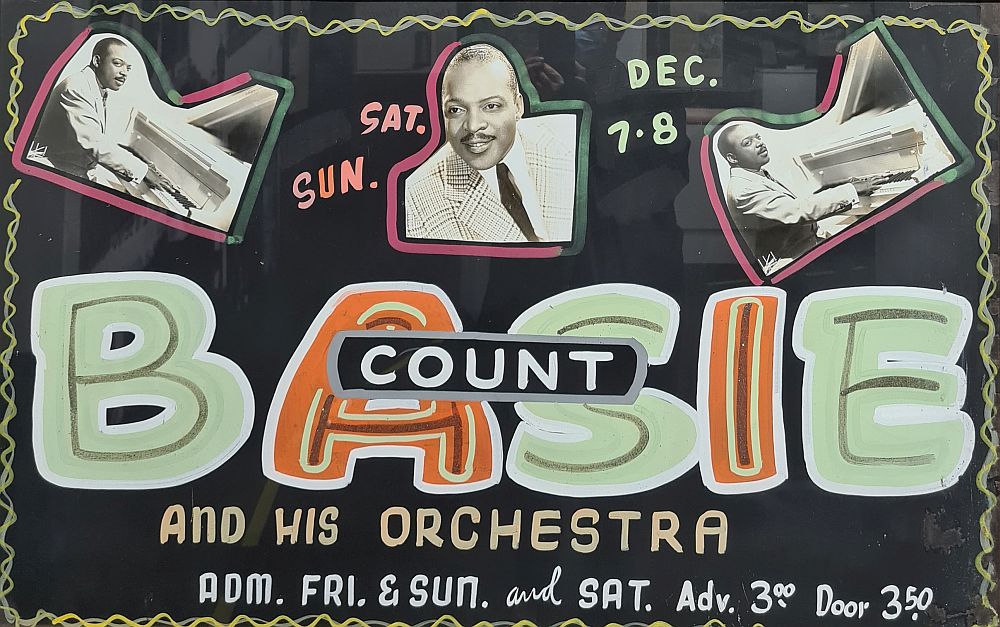
Overtown’s decline
Overtown’s heyday ended in the 1960s. The Civil Rights Movement gradually broke down racial barriers in housing and other areas, so some residents moved out. “Urban renewal” came to Overtown, and in a pattern repeated in many cities, ended up pushing many Blacks out of the neighborhood. Black performers no longer had to travel to Overtown after their shows, so the hotels closed down. New highways and an interchange cut straight through the middle of Overtown, necessitating the destruction of large swathes of land and many homes – again, a pattern repeated all over the US – forcing many people and businesses out. In short, the area became economically depressed.
Overtown today
Nowadays new efforts are being made to regenerate the area and local businesses. Efforts to preserve what parts of Historic Overtown still remain are ongoing. At the same time, the business district just to the south called Brickell has grown spiky with skyscrapers, and gentrification is reaching out in all directions. An area like Overtown is ripe for development, and on my visit there I saw many building sites or completed upscale apartment complexes, perfect for people who worked so nearby in Brickell. Meanwhile, the area north of Overtown, called Wynwood, is becoming a very hip area. Its upscale businesses and housing are likely to spread southward.
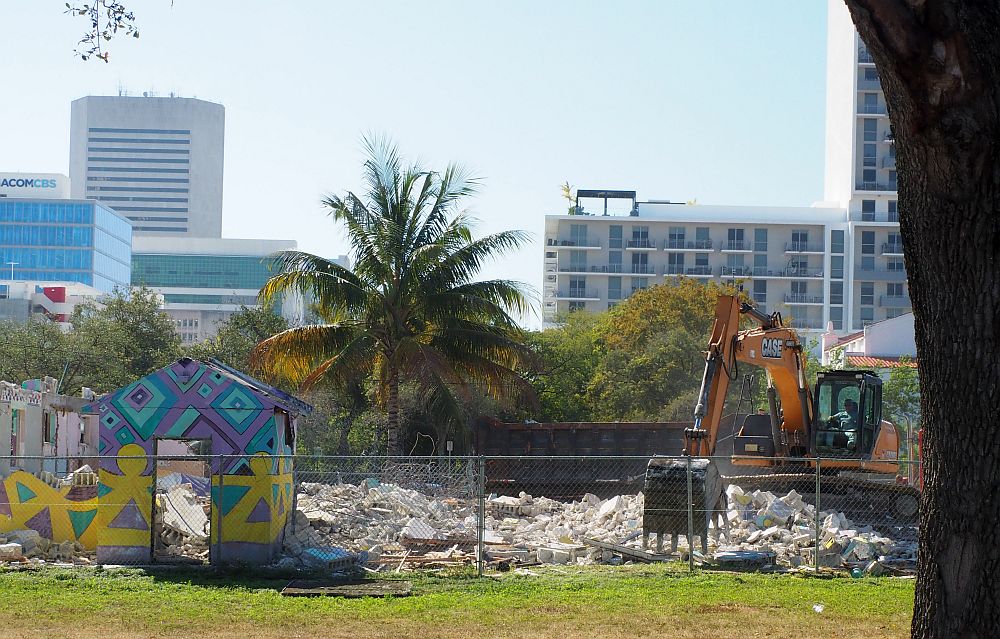
While Overtown residents are preserving the history of Overtown – more on that below – it seems clear that the area will change significantly in the next decade or so. Now predominantly African-Americans, with some Latinos mixed in, it’ll be more diverse, certainly, and also more upscale, which I suspect will force some residents out to less expensive neighborhoods.
What to see in Historic Overtown, Miami
So what does all of this have to do with me, a white woman traveler? As I was researching what to see in Miami, I came upon this story and this neighborhood, and realized that it’s completely off the tourism radar. I decide to stay there a few nights and see what there might be to see for history buffs like me. Here’s a map with every place mentioned in this article:
In short, there’s plenty to see! Here’s a list of the highlights, in no particular order:
Dana A. Dorsey House
This historic home dating to 1913 belonged to Dana A. Dorsey, Florida’s first Black millionaire. He made his money through the creation of Miami’s first Black-owned bank as well as through investments in real estate. At one point he even owned Fisher Island, near Miami Beach. He planned to establish a Black resort there, since Blacks were barred from the beaches everywhere else. White resistance – it was on the side of the railroad tracks designated for whites – and difficulty in getting the workers to the island consistently eventually meant the plan failed and he sold off the land.
Dorsey house, in a simple style called “Frame Vernacular,” was severely damaged in Hurricane Andrew in 1992. It’s been renovated to its original plan and includes the original façade as well as a front porch that dates to 1940.
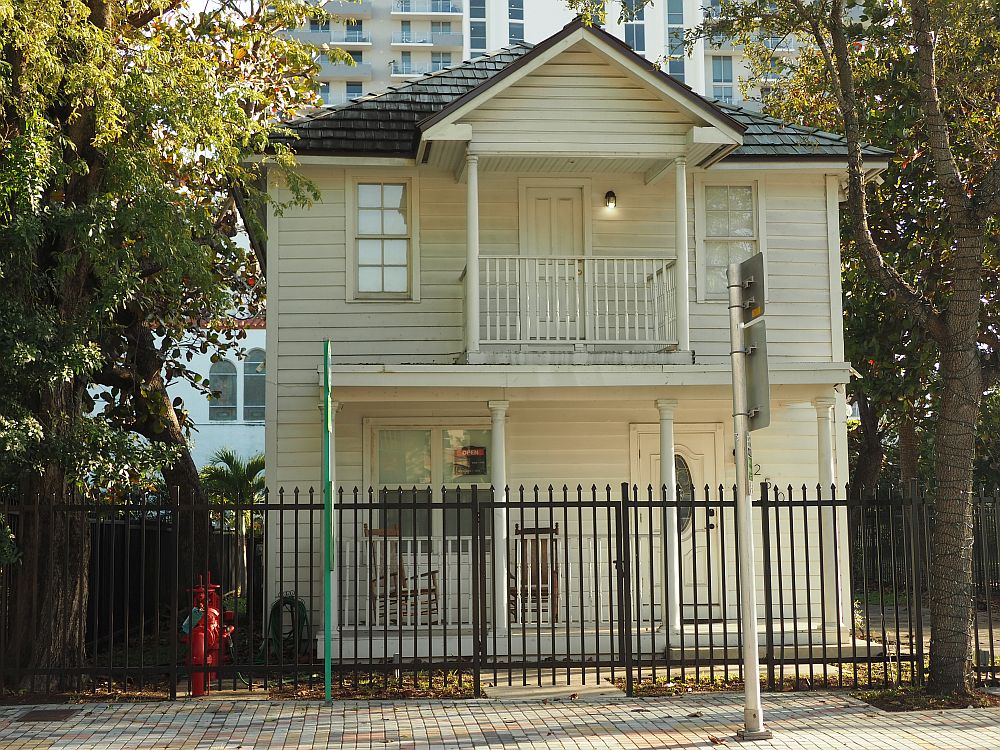
The inside of the Dorsey House is now an exhibition space dedicated to how the Black community came into being in Overtown. Cases displaying African art and artifacts are juxtaposed with information in text and photos about slavery in the pre-Civil War period both in general and more specifically in Florida. It also covers the Caribbean – particularly Bahamian – escapees and ex-slaves who immigrated to Miami, as well as topics like people who escaped slavery by fleeing north, the African-Americans who emigrated “back” to Africa, and the more recent waves of Black immigrants from Africa.
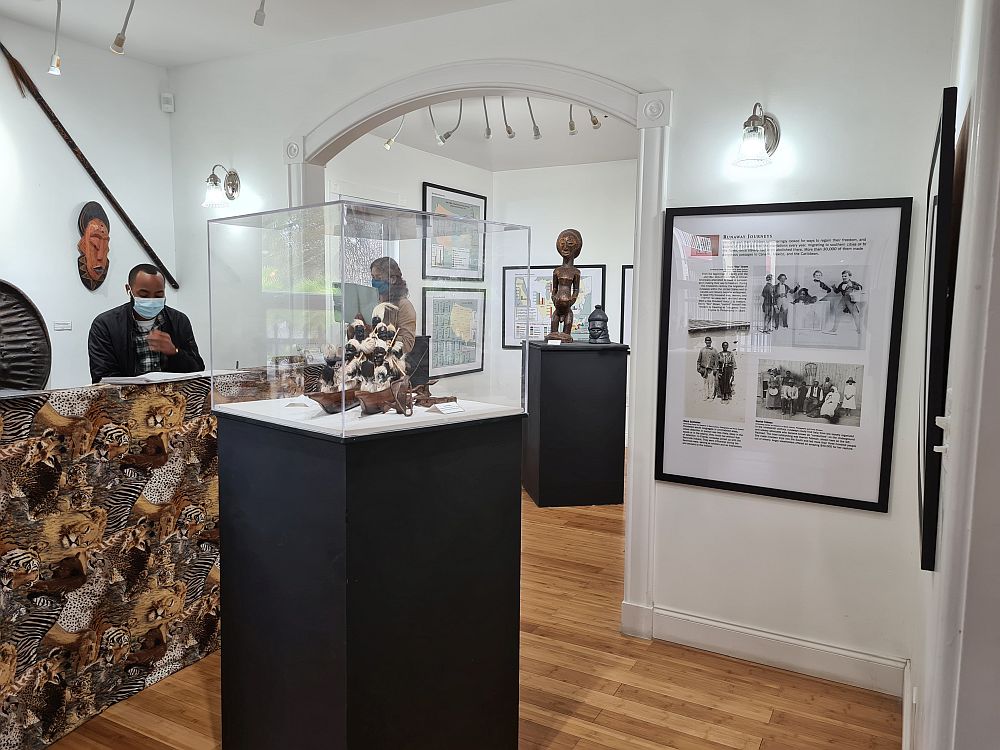
The exhibit comprises only a few rooms, and they’re rather dry. What I mean is that there’s a lot of text and charts but nothing interactive. On the other hand, it covers topics beyond the general outlines of the institution of slavery in the US: topics I knew little or nothing about. If this interests you, by all means spend some time at this little museum.
Dorsey House: 250 NW 9th St. Admission: free.
The Black Archives Historic Lyric Theater
The Lyric Theater opened in 1913 to serve the local Black community as a movie and vaudeville theater. You can see the original entrance around the side from the current entrance on a plaza. Boarded up in the 1960s, it stood empty until the Black Archives took it over in 1988. It’s since been renovated and reopened for use as a theater again. It hosts a diverse range of events: musical programs, spoken word, comedy and more.
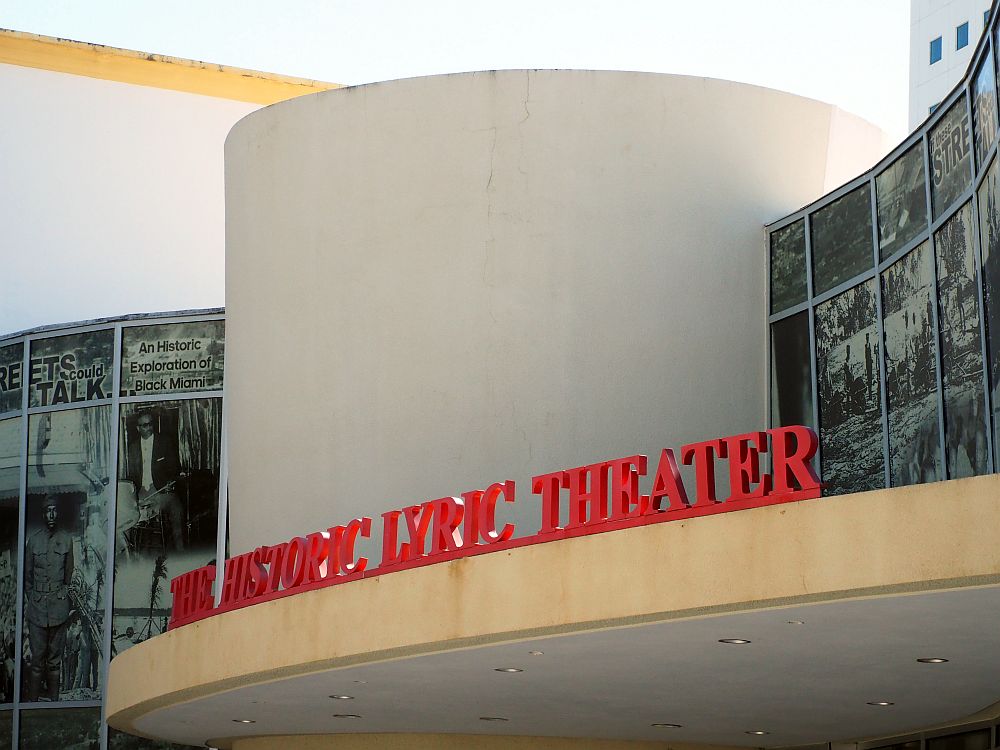
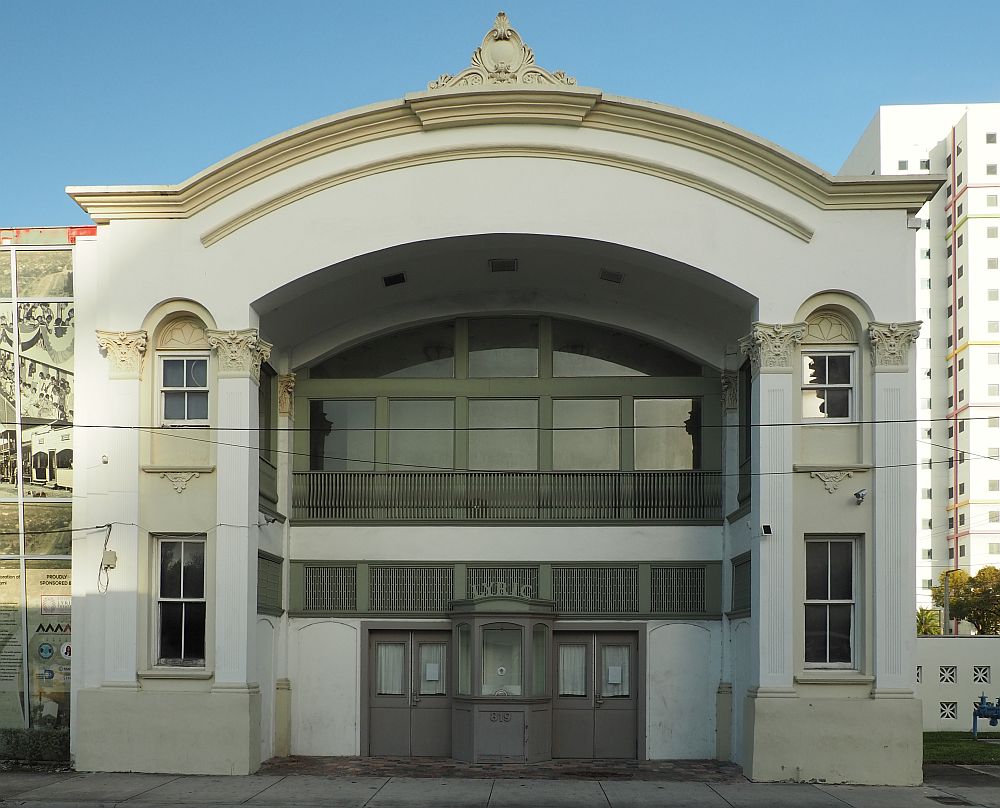
Lyric Theater: 819 NW Second Ave. Website.
Exhibitions inside the Lyric Theater
Inside the theater is an exhibition space. When I was here, an exhibit called “If these streets could talk” zoomed in to local African-American history. It told the story of “Colored Town” very effectively, using lots of photos and texts, as well as the mockup pictured above of a street in “Colored Town.”
Unfortunately, that exhibition has ended. Fortunately, the current one sounds just as interesting. Titled “On the Ban Wagon” it focuses on banned books, particularly books that have been important to African-American history. The topic is addressed primarily through artworks.
Lyric Theater: 819 NW Second Ave. The doorway to the left of the main entrance on the plaza. Admission: free. Website.
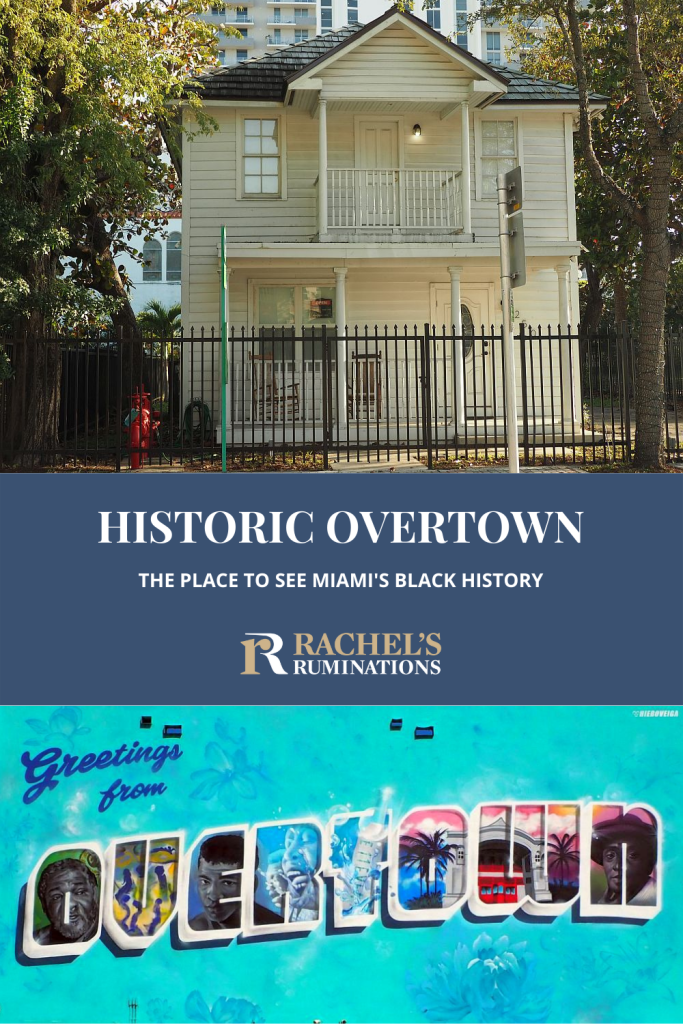
Police Precinct and Courthouse Museum
This former police station is notable because it is where the first five Black police officers were sworn in in 1944. More joined the force later. They operated independently of the white police force, but had no power to arrest whites until 1963, when their exclusively Black police precinct closed. They received poorer benefits than their white counterparts.
To complement the Black police force, a Black judge, Lawson E. Thomas, was appointed here in 1950. He was the first Black judge in Miami-Dade county and in all of the American South since the end of Reconstruction. This period from 1950 until the branch closed in 1963 was effectively the first time that a Black community had a Black police force and where a Black judge presided over their cases. In other words, these were probably the first truly fair trials for African-American citizens.
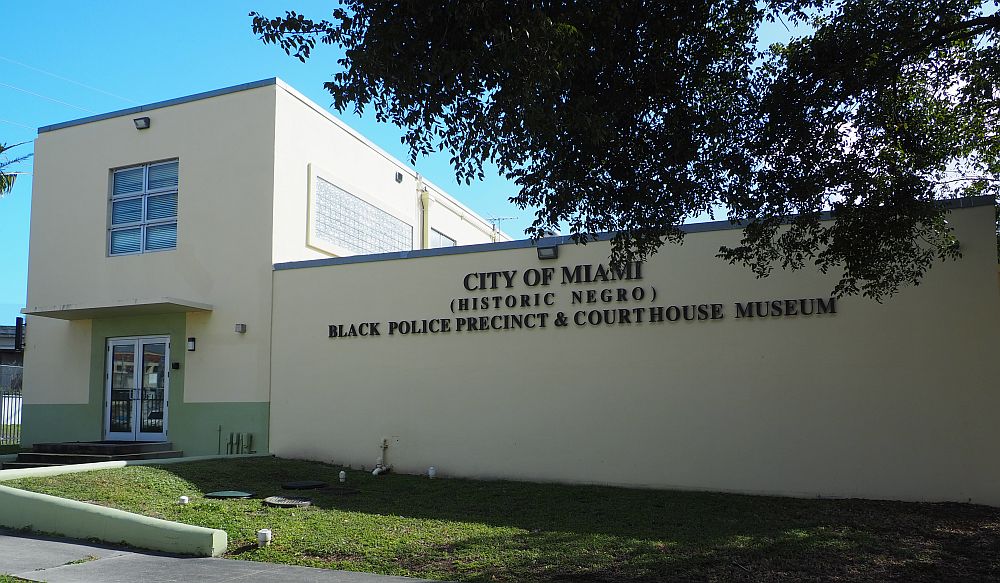
Unfortunately the museum was closed when I tried to visit so I can’t attest to the quality of the museum. If you go there, please add a comment below stating whether or not you recommend a visit.
Black Police Precinct and Courthouse Museum: 480 NW 11th St. Open Tuesday-Saturday 10:00-16:00. Website.
Ward Rooming House
Built in 1925, this rooming house was home primarily to Bahamian immigrants in the neighborhood’s heyday. The building and the lot next to it are now an art gallery space for African-American artists, hosting themed temporary shows.
Ward Rooming House: 249 NW 9th St. Open Wednesday-Saturday 13:00-18:00 (but closed between shows). Website.
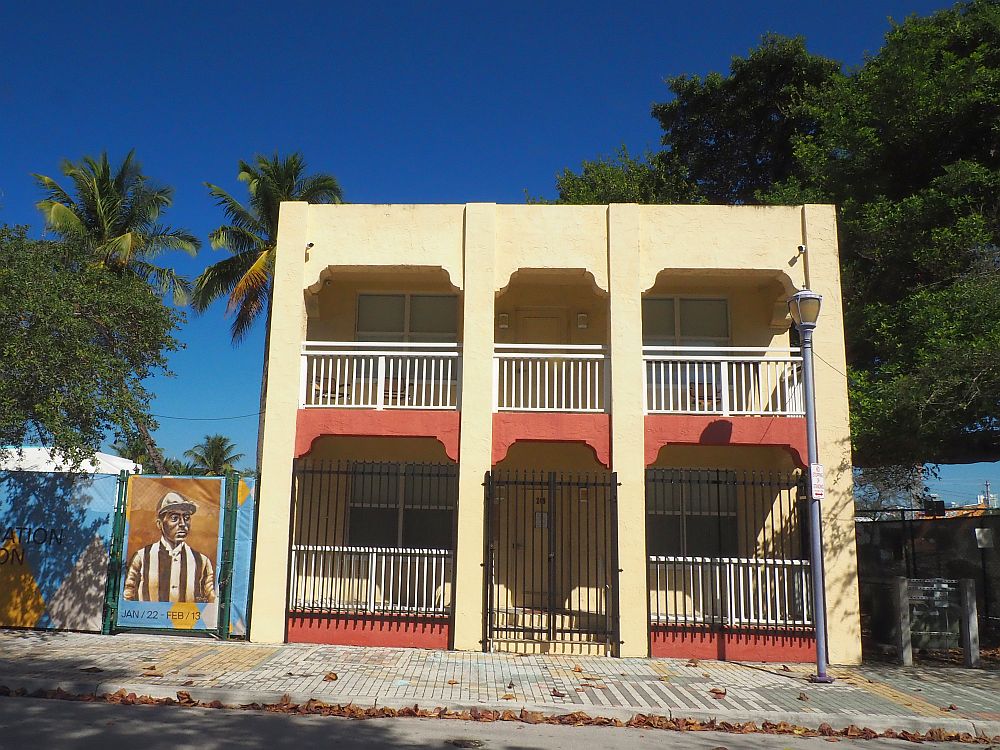
Churches
Even before Miami’s incorporation, churches were becoming important community hubs, and more were built as the Black population of Overtown grew. Here are some of the historic ones:
Greater Bethel African Methodist Episcopal Church
This church dates to 1896, the same year as the founding of Miami. That makes it the oldest Black congregation in Miami. Construction began in 1927 but wasn’t competed until 1943. The architectural style is Mediterranean Revival.
Greater Bethel African Methodist Episcopal Church: 245 NW 8th St. Website.
Mount Zion Missionary Baptist Church
Also begun in 1896, this congregation is only a few months younger than Greater Bethel. The current building dates to 1928, and took almost as long as Greater Bethel to complete: it was finished in 1941. Like Greater Bethel, the style is Mediterranean Revival. The I-95 overpass is very close to the church, and the congregation even had to give up a part of the church to provide the land required for an entrance ramp.
Mt. Zion Missionary Baptist Church: 301 NW 9th St.

Ebenezer Methodist Church
Founded in 1898, this is one of the old guard of churches serving the Black residents of Overtown. The current building, in Gothic Revival style, dates to 1947. Today it is home to the Overtown Performing Arts Center, an events and performance space.
Overtown Performing Arts Center: 1042 NW 3rd Ave. Website.
St. John Baptist Church
Founded in 1906, this church’s current Art Deco building dates to about 1940. A Black architectural firm designed it.
St. John Baptist Church: 1328 NW 3rd Ave. Website.
X-Ray Clinic
Dr. Samuel Johnson was South Florida’s first radiologist. Blacks were not welcome at the x-ray facilities at City Hospital, so he provided this service from this location in Overtown. Built in 1939, the building is in Art Deco style, something you’ll see much more of if you visit Miami Beach.
X-Ray Clinic: 171 NW 11th St.
Street art
Check out the murals painted onto the sides of the highway overpasses. A couple are by Purvis Young, whose work used elements of collage. They cover topics related to Overtown’s history.

Right next to one of the overpasses, on the side of an apartment house with a storefront “Lollipops and Gumdrops children’s spa” is a wonderfully bright mural: “Ode to Overtown” by Marvin Weeks. It summarizes Overtown’s history in one picture.
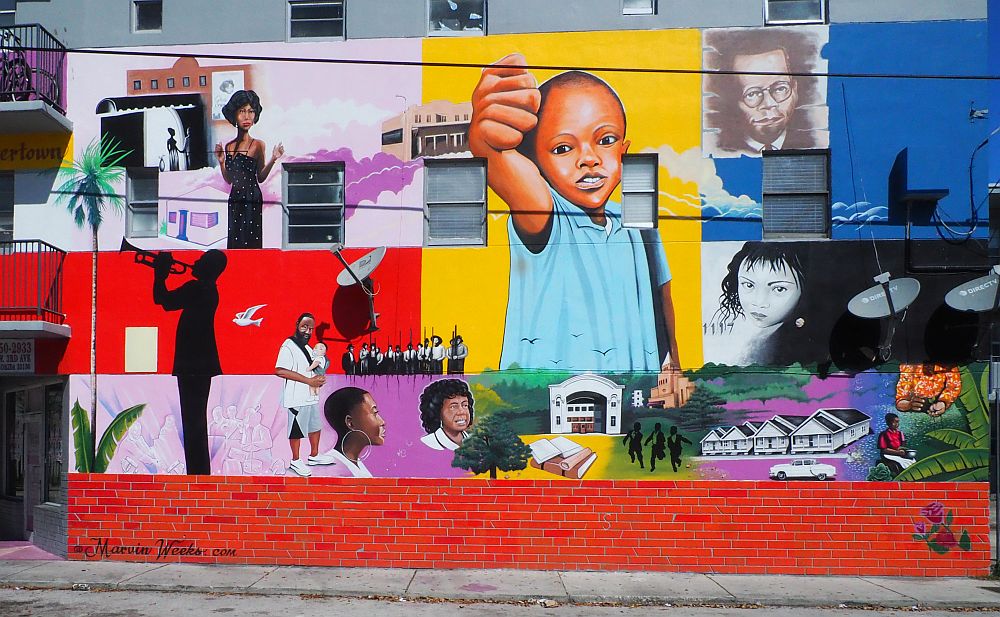
Where to eat in Historic Overtown, Miami
Going on recommendations from hotel staff, I ate at three local establishments, all of which I’d recommend, depending on what kind of dining experience you’re looking for:
Jackson Soul Food
Jackson Soul Food is a no-frills, no-pretentions restaurant serving breakfast and lunch. It’s a big plain room, brightly lit, and must get quite loud when it’s busy. The food is also plain, but good. I had breakfast there one day – eggs, bacon, hash browns and biscuits – and thought the quality and service were both excellent. It’s not easy to get hash browns just right, and the biscuits were clearly freshly baked.

Jackson Soul Food: 950 NW 3rd Ave. Open Wednesday-Monday 6:00-14:00; open till 17:00 on Thursday. Closed on Tuesdays. Facebook page.
Red Rooster
Red Rooster is a long-established institution in New York City’s Harlem. The Red Rooster in Overtown is the same company. It’s called a soul food restaurant, but it’s more fusion, I’d say: a mix of soul food with other influences. It’s also not cheap.
Red Rooster just oozes atmosphere. Check out the mural above the bar in the restaurant and the framed Overtown pages from The Green Book – once the authoritative guide for Black travelers in the Jim Crow South. I sat at the main bar and had the pork and plantain dinner: “heritage pork belly chicharron, maduros, cucumber, curry caramel.” It was delicious. When I told the bartender I wanted something non-alcoholic to drink, she offered to make something up for me. I have no idea what was in her concoction, but it was just the right balance of tart and sweet.
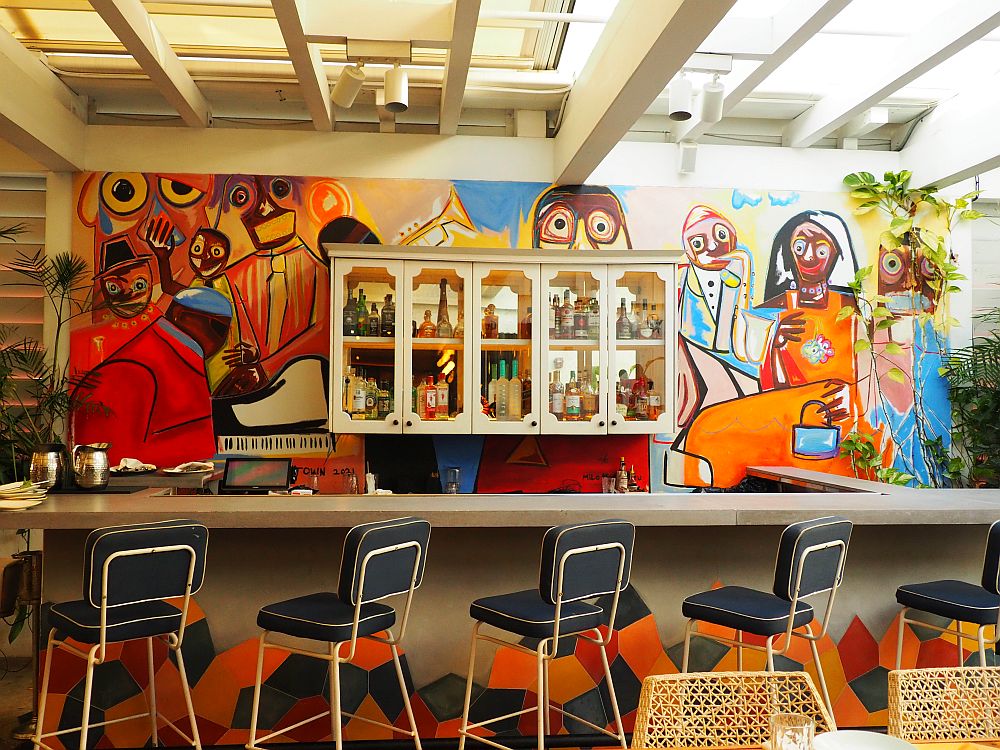
Red Rooster: 920 NW 2nd Ave. Serving food Tuesday-Thursday 17:00-22:00, Friday 17:00-23:00, Saturday 16:00-23:00, and Sunday 16:00-22:00. Happy hour Tuesday-Sunday 16:00-19:00. Brunch on Saturday and Sunday 10:00-16:00. Website.
House of Wings
At the other end of the scale is House of Wings, a storefront fried chicken takeaway. I went there the night I arrived in Overtown because I was tired and it was near my hotel. Seeing this simple storefront, I expected KFC quality. Wrong! I think these were the best chicken wings I have ever tasted, and I regretted ordering only 5 wings plus fries. I should have just ordered the wings: lots of them! They offer dozens of flavors; I think my wings were honey mustard, but I’m not sure.
House of Wings: 1039 NW 3rd Ave. Open Monday-Thursday 11:00-20:00, Friday and Saturday 11:00-21:00 and Sunday 11:00-19:00. Website.
Where to stay in Historic Overtown, Miami
The Dunns-Josephine Hotel is the only remaining hotel in the area, housed in two buildings that used to be two separate hotels. The Josephine Hotel (1938) and the Dunns Hotel (1947), both catered to the Black entertainers who performed in Miami Beach and stayed in Overtown.
Both buildings together are now a boutique hotel, themed on the Black musicians of the area’s heyday. Each room is named after an entertainer – I stayed in the Ella Fitzgerald room – and the common spaces and rooms sport artwork and other décor fitting the time period and theme.
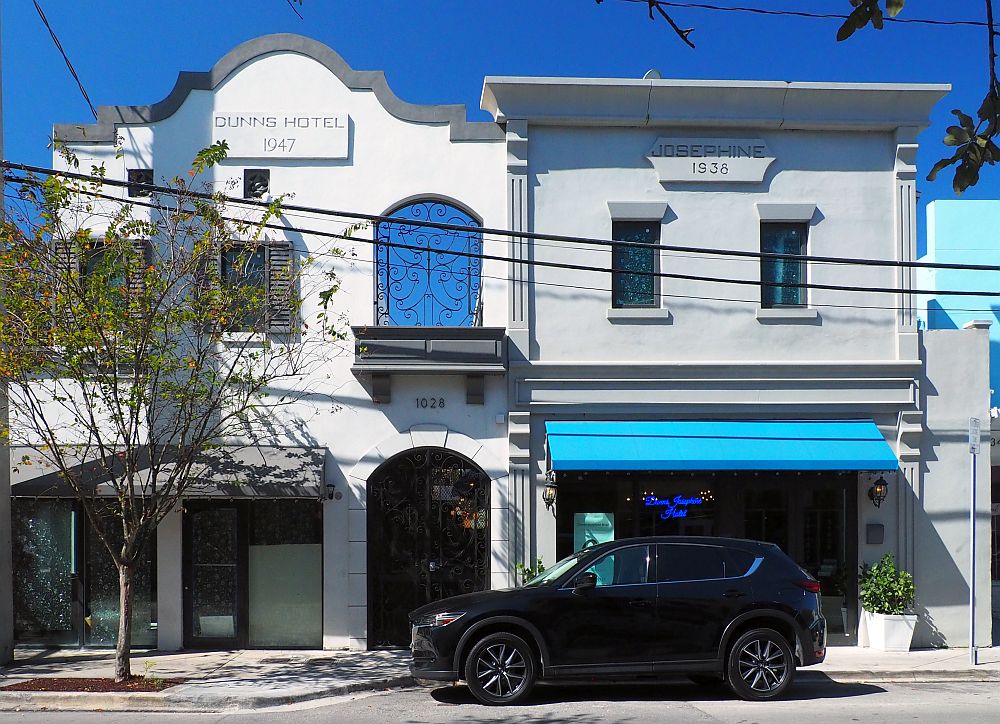
Sojourn Heritage Accommodations owns and operates the Dunns-Josephine Hotel and three other boutique hotels. All of them have a connection of some sort to Black history; for example, the Six Acres B&B in Cincinnati was once owned by a Quaker who used his property to help slaves escape along the Underground Railway. All of the hotels are in urban areas, acting on the idea that gentrification in cities has to include the Black community. As much as possible, the hotels favor local producers and service providers and Black-owned businesses.
Dunns-Josephine opened after a thorough renovation just in time to close down again for the pandemic. They weathered it by opening the hotel to homeless people affected by the pandemic, some of whom were in isolation, others of whom just needed a place to stay.
The hotel reopened as a hotel just a few weeks before I stayed there, and seems to be taking off, not just as a hotel, but in collaboration with various events in Overtown and elsewhere in Miami.
The staff at Dunns-Josephine Hotel were wonderfully welcoming and friendly to this random solo-traveling white woman, answering my stream of questions about the hotel and the neighborhood with humor and grace. My room, painted deep purple, was comfortable and quiet. I loved the toiletries by BeLoved Box that were provided in the room.
If you’re going to visit a lot of Miami sights, it might be worth your while to get a Miami Go City Pass. It could save you quite a bit on admissions.
The only slight bit of critique I have would be the quality of the breakfast, which was more of a snack than breakfast. Guests could help themselves to coffee or tea and an assortment of pre-packaged pastries such as muffins and/or a piece of fruit, but no bread, yogurt or cereal. This may or may not be a holdover from pandemic-related measures. Anyway, I’d suggest going to Jackson Soul Food for breakfast instead.
Dunns-Josephine Hotel is the kind of hotel I recommend most highly. While you can get all the bells and whistles at a big five-star chain hotel, boutique hotels have more character and treat guests as individuals. This boutique hotel checks all the right boxes both with the level of comfort the rooms offer and with their socially-conscious involvement and investment in the community.
While you could consider a boutique hotel to be a step on the way to gentrification, I think gentrification is inevitable in this location. Efforts like this one contribute toward the goal of including the existing community in that transition rather than driving them out. It also serves as an education for guests about this generally overlooked neighborhood and its fascinating history.
Dunns-Josephine Hotel: 1028 NW 3rd Ave. Website. Book the hotel here.
Of course, there are plenty of other hotels in Miami, but they’re all outside of Overtown. You can book other accommodations through the map below:
Save this post for future reference:
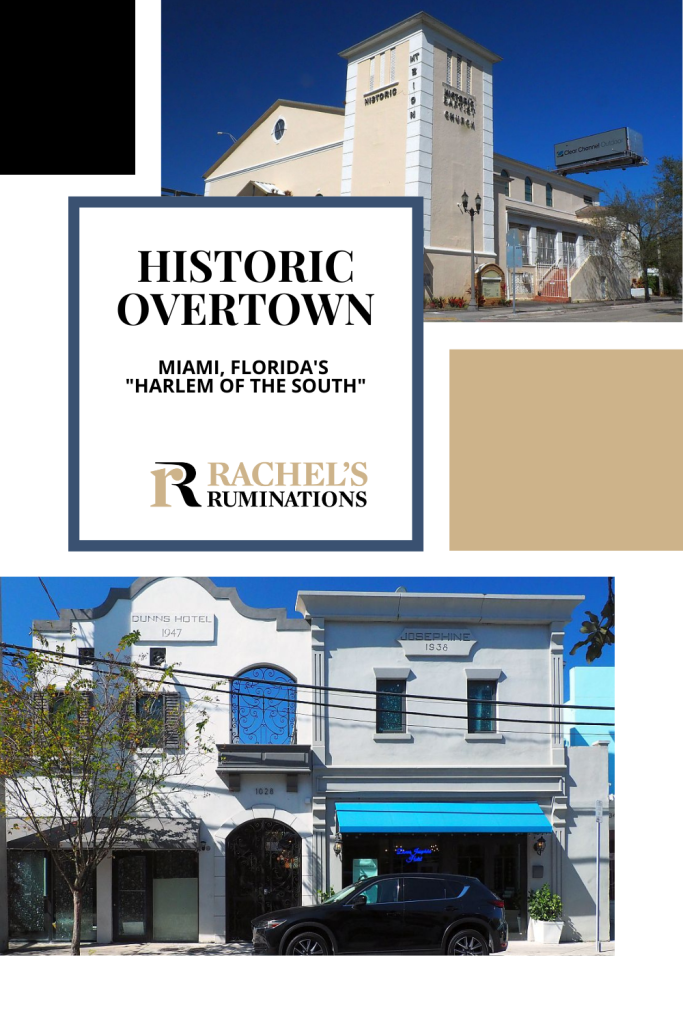
Updated September 17, 2024.
My travel recommendations
Planning travel
- Skyscanner is where I always start my flight searches.
- Booking.com is the company I use most for finding accommodations. If you prefer, Expedia offers more or less the same.
- Discover Cars offers an easy way to compare prices from all of the major car-rental companies in one place.
- Use Viator or GetYourGuide to find walking tours, day tours, airport pickups, city cards, tickets and whatever else you need at your destination.
- Bookmundi is great when you’re looking for a longer tour of a few days to a few weeks, private or with a group, pretty much anywhere in the world. Lots of different tour companies list their tours here, so you can comparison shop.
- GetTransfer is the place to book your airport-to-hotel transfers (and vice-versa). It’s so reassuring to have this all set up and paid for ahead of time, rather than having to make decisions after a long, tiring flight!
- Buy a GoCity Pass when you’re planning to do a lot of sightseeing on a city trip. It can save you a lot on admissions to museums and other attractions in big cities like New York and Amsterdam.
- Ferryhopper is a convenient way to book ferries ahead of time. They cover ferry bookings in 33 different countries at last count.
Other travel-related items
- It’s really awkward to have to rely on WIFI when you travel overseas. I’ve tried several e-sim cards, and GigSky’s e-sim was the one that was easiest to activate and use. You buy it through their app and activate it when you need it. Use the code RACHEL10 to get a 10% discount!
- Another option I just recently tried for the first time is a portable wifi modem by WifiCandy. It supports up to 8 devices and you just carry it along in your pocket or bag! If you’re traveling with a family or group, it might end up cheaper to use than an e-sim. Use the code RACHELSRUMINATIONS for a 10% discount.
- I’m a fan of SCOTTeVEST’s jackets and vests because when I wear one, I don’t have to carry a handbag. I feel like all my stuff is safer when I travel because it’s in inside pockets close to my body.
- I use ExpressVPN on my phone and laptop when I travel. It keeps me safe from hackers when I use public or hotel wifi.


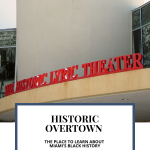
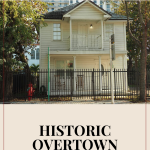

Do you have any info of the First Black Funeral Homes in Overtown. One in particular
Francis Funeral Home?
No, I learned nothing about a funeral home, but there must have been one that served the black community. I’d suggest asking at the Black Archives and/or at any of the churches. Sorry I can’t help more.